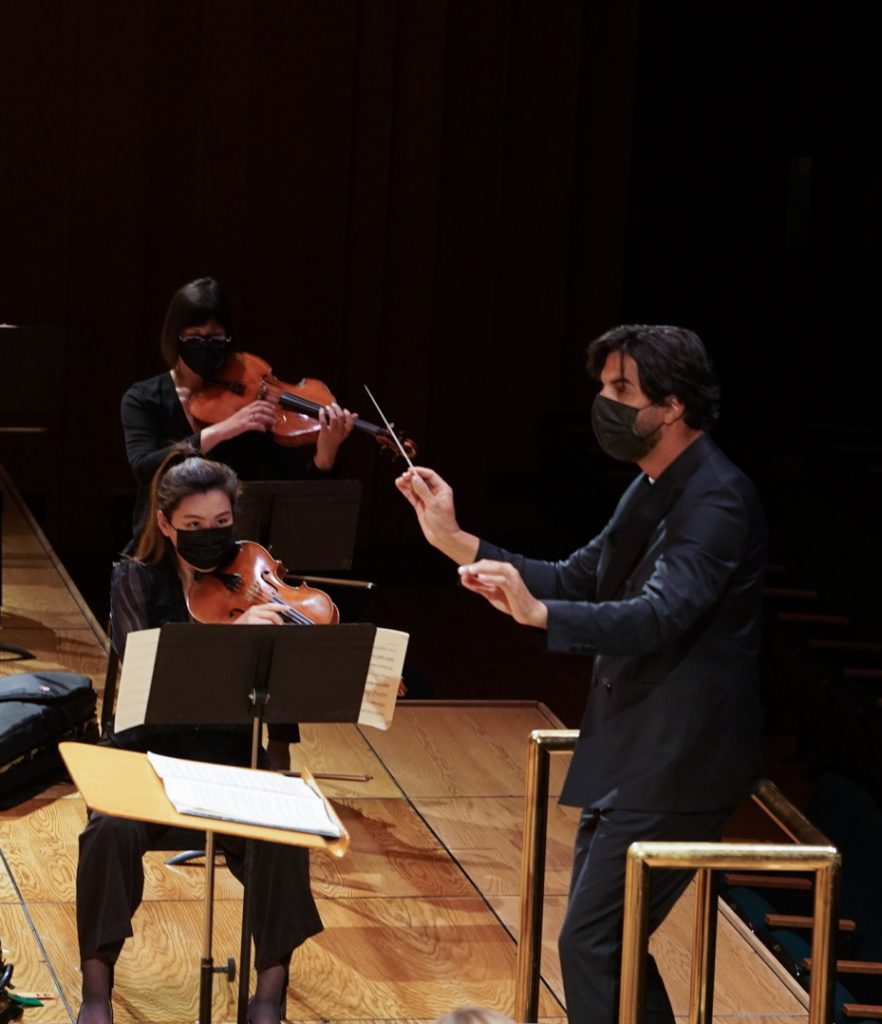Worlds collide with Sierra and Bartok in Utah Symphony program

Photo: Kathleen Sykes
If one were forced to name one good thing about the pandemic, one might note how it showcased the Utah Symphony string section. Because string players can perform masked and don’t blow respiratory droplets into the air when they play, the Utah Symphony string section has been carrying the orchestra through its downsized programs of the past year.
Like most of the orchestra’s concerts since last March, Thursday night’s concert at Abravanel Hall featured two pieces for strings alone—Roberto Sierra’s Sinfonietta and Bela Bartok’s Divertimento—with Mozart’s Symphony No. 41 adding appropriately distanced wind instruments. Led by Domingo Hindoyan, a guest conductor making his Utah Symphony debut, the strings and the rest of the orchestra acquitted themselves well.
Sierra’s Sinfonietta is a charming, rhythmically inventive and wholly accessible piece calling to mind Leonard Bernstein and John Adams’ post-minimalist works. Hindoyan conducted its world premiere last month in Detroit, and his familiarity showed in Thursday night’s performance. With conscientious phrasing, the 41-year-old Armenian-Venezuelan conductor led the orchestra through the Sinfonietta’s varied moods and styles. The first movement featured broad, chromatic slurs, furious pizzicatos and a Hungarian-sounding melody that alternated between the violins and the violas.
The second movement was more mysterious and contemplative. Polyrhythmic pizzicatos began the portentous third movement, which built to the rapturous fourth movement, featuring a dazzling contrapuntal duet between concertmaster Madeline Adkins and principal second violinist Claude Halter.
Repartee between Adkins and Halter also featured prominently in the first movement of Bartok’s Divertimento. After Sierra’s populist style, it was a bit jarring to plunge into Bartok’s tougher musical language, with its densely stacked dissonances.
Hindoyan’s unique gifts surfaced in the Divertimento’s stunning Adagio, which begins in a hushed tone and builds to a lyrical melody. In Hindoyan’s interpretation, not a single note was too loud or too soft as the two-note motive evolved from ominous to piercingly sweet. The orchestra swelled as a unit, but each solo passage was played with an expressive flourish.
The conductor’s sensitivity and attention to detail also served Mozart’s “Jupiter” Symphony, which began more slowly and softly than it is usually played. It soon became clear that this was a deliberate choice, meant to give the piece room to grow through its many moods. More than once, Hindoyan pulled the orchestra back, choosing lucidity and clear expression over volume, and making the piece grow organically to each climax. The four movements blended seamlessly into the piece’s overall architecture and brought the socially distanced, masked audience to a standing ovation.
The Utah Symphony will repeat the program at Abravanel Hall 7:30 p.m. Friday and 7:30 p.m. Saturday. Seating is limited and strict health protocols are observed. utahsymphony.org; 801-533-6683.